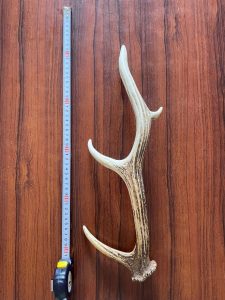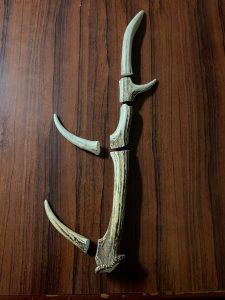Memoir (6) by Professor Joe Watkins, University of Arizona, USA
When I was an undergraduate anthropology student in Oklahoma, I fell in love with the antler objects shown in books about human cultures in Europe. While the material I liked were antler harpoons, I eventually grew to covet antler for use as flintknapping billets, pressure flakers, and other tools. Antler is more durable than most wood, and Items made by archaeological and contemporary cultures out of antler were a little more likely to be preserved in the archaeological deposits – and they were cool!
We don’t know how long antler has been used by humans, but archaeologists think that the explosion of the number of a specific type of stone tool that probably was used in carving antler, bone, ivory, and/or wood – the burin – is an indication of increasing use of such materials. Antler is a resource that has been worked into many different types of objects by human populations as well as used in making stone tools. Saami artisans of the Scandinavian countries of northern Europe and Russia still use reindeer antler to make beautiful and useful objects.
In Oklahoma, where I was born, antlers came primarily from white-tailed deer, although there are some elk in southwestern Oklahoma that provide larger, heavier antlers. Here in Japan, the sika deer (or northern spotted deer) is the primary source of antler. Each year, the bucks grow new antlers, and the following spring shed them. Thus, each male deer might produce as many as 10 antlers (based on an average lifespan in the wild of about 5 years), although their earlier ones might be smaller.
I’ll show some of my antler items later on, after I have time to make them!


Deer antler that was shed naturally. On the left is the complete antler; on the right is the same antler cut into sections for use in flintknapping and for other tools. Photos by Joe Watkins.


